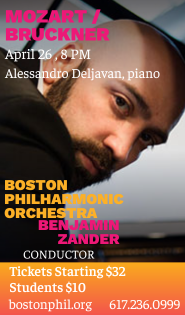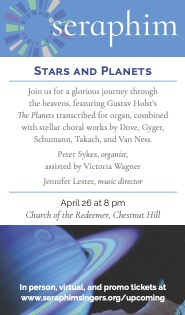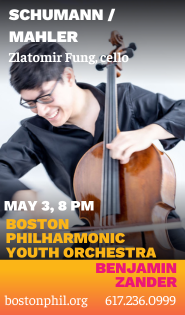Handel & Haydn to provide a fresh, entertaining approach to Purcell rarities
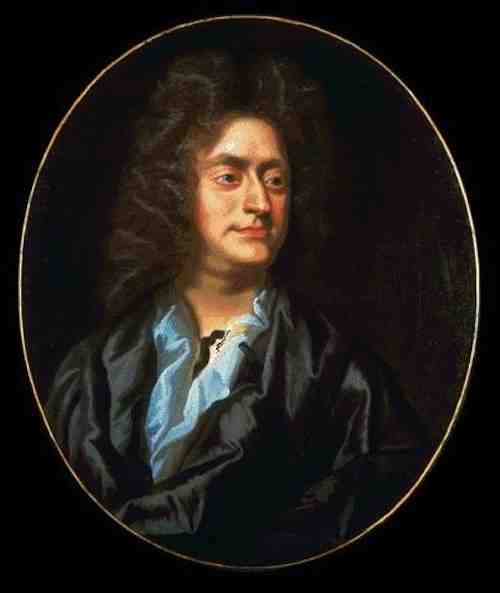
Rare stage music of Henry Purcell will be presented this weekend by Harry Christophers and the Handel and Haydn Society.
Few names are more synonymous with English music as Henry Purcell. His contributions to instrumental, choral, and dramatic music earned him notoriety even during his own short life. Yet beyond his tragic masterwork Dido and Aeneas, the composer’s other stage works remain little performed outside of Britain.
“This music is not done in the states, which is a shame,” said Harry Christophers in a phone conversation from London. “It’s high time.”
At Jordan Hall Friday night, the Handel and Haydn Society, under artistic director Christophers, will bring Purcell’s rarely heard opera works to Boston audiences. Scenes from the semi-operas King Arthur and The Fairy Queen will serve as musical appetizers for the concert’s showpiece, a performance of the complete music from the five-act Indian Queen, the composer’s final work for the stage.
Through-sung operas, such as Purcell’s Dido and Aeneas and John Blow’s Venus and Adonis, were rare in seventeenth-century London. Full- scale opera would not achieve widespread popularity until Handel’s arrival in England early the following century. Most of Purcell’s dramatic music was intended to be sung by secondary characters in spoken plays.
But these works “are full of incredible variety and interest,” said Christophers, a noted authority on Baroque musical performance.
“Purcell is probably the greatest English composer of all time. He comes down to us from sacred to dramatic work. He was a brilliant musical dramatist [and] one of the composers to come to life in the historically-informed performance movement.”
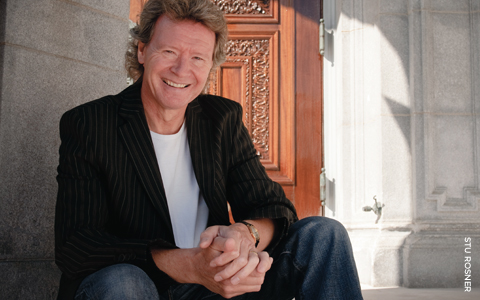
Harry Christophers. Photo: Stu Rosner
To bring the Purcell program and others to life, Christophers and H&H have delved into the music’s sources. “I approach all music the same way. I try to get into the composer’s sound world and try to be as authentic as we can,” he said.
“I think all music has to survive off interpretation. That is what we’re about, first and foremost, music of the past. We use these editions that musicologists have worked on to understand what the composer intended.”
This is especially true when trying to recreate Purcell’s sound world with the orchestration. “We do believe he wrote certain chords they way he did to bring the music to life. We’re having a better stab at what he intended with period instruments,” Christophers said.
“We know Purcell did not use a sixteen-foot bass. We use bass violins now. I have used a light violone. You need a little depth to the sound,” Christophers continued. “He wrote some fantastic violone parts.”
And for this week’s performers, these works are likewise imbued with Purcell’s personal touch. “What’s cool about Purcell is that he’s not like Handel, who was a carpetbagger,”says tenor Zachary Wilder, who will make his H&H debut in this program. “There’s something quintessentially English about him. There are beautiful, melancholic aspects to this music. The corners and edges to this music are delightful. It’s almost modern.”
Audiences will get a full taste of that sound with The Indian Queen, which will comprise the second half of the concert.
Based on a play by John Dryden and Sir Robert Howard, the story of this semi-opera tells of the Mexican Queen Zempoalla and her struggle against the invading Peruvians, led by Montezuma. As the drama unfolds, Montezuma discovers that Zempoalla had usurped the throne from the rightful queen, who turns out to be his long-lost mother.
Musicologist Curtis Price opined that that the play was “carelessly adapted from Dryden and Howard’s original tragedy of 1664.” The version Purcell set to music, he noted, cut the original 1400 lines to 640.
“The play is not without its problems,” said Wilder, who, along with English bass-baritone Jonathan Best, will be performing a number of the solo roles in the Indian Queen. “There are plot holes and touchy, outdated, seventeenth-century race issues, too. But the music is so great.”
Wilder is backed by scholarly opinion. Regarding the music, Price has commented that, “Purcell transformed this historically and geographically preposterous story, which is told entirely in heroic couplets, into a powerful tragedy.”
That music, though, is incidental. Most of the main characters only have speaking roles. Instead, Purcell focuses the incidental music to fit Montezuma and, in particular, Zempoalla. The music has a Greek chorus effect: the singers, as supporting cast, offer commentary.
The longest of The Indian Queen‘s scenes, from Act 3, concerns Zempoalla, who consults the magician Ismeron after having a nightmare. Ismeron’s dance-like vocalise, “Ye twice ten hundre deities,” the historian Charles Burney noted in the 18th century, was one of the finest in the English language. Its accompanying aria, “By the croaking of the toad,” is a rambling, farcical piece.
“It’s a fantastic sequence of writing. The aria goes through every harmonic sequence possible,” Christophers said of the scene.
Purcell died before he could complete The Indian Queen. His brother Daniel, an able composer in his own right, appended an ending of his own, “The Masque of Hymen,” which Price called “a rather feeble attempt to provide a happy ending.”
Christophers admitted that he shares Price’s sentiment regarding the masque’s place in the larger drama. But by itself, “it’s a fun piece [with] a hilarious duet between two married people,” he said.
H&H will perform Daniel Purcell’s jocular masque in the first part of the program along with the “Frost Scene” from the elder composer’s King Arthur and the “Drunken Poet Scene” from The Fairy Queen.
The former is a curious scene from Dryden’s original take on the King Arthur legend where Cupid wakes the Cold Genius, the stubborn deity of Britain’s cold climate, from his slumber in the frozen depths. In a stammering aria for bass, which Best will perform in his H&H debut, the Genius questions the flirtatious spirit for the disturbance. Cupid responds by warming the Genius’s heart with love’s spell. In the dramatic context, the Frost scene served as a ploy for Osmond, wizard of the invading Saxons, to win the heart of Emmeline, Arthur’s girlfriend.
The Drunken Poet scene, which has nothing to do with Shakespeare’s Midsummer Night’s Dream upon which The Fairy Queen is based, is another stammering, humorous scene for bass. The fairies mock the drunken lout and eventually drive him away.
To introduce these disparate scenes, H&H will add instrumental music and dance music from the semi-operas, Christophers noted.
Conductors have to use their informed imaginations when dealing with the more sketchy sections of Purcell’s scores,” he said. “Take for instance the Frost Scene from King Arthur. All we have from Purcell are wiggly lines over the music. “Usually, those passages are performed as tremolos. “[But] we may do something different [than what’s normally heard],” said Christophers.
“I love academia, but let’s not get bogged down in it,” he reasoned. “We’re allowed a little bit of poetic license.”
Ultimately, the greatest challenge is to bring a fresh approach to these time-tested works, says Christophers. “We’ve taken the cobwebs off the music and are reliving it. We’re here to entertain and to bring this music to life.”
The Handel and Haydn Society will perform their Purcell program 8 p.m. Friday at Jordan Hall and 3 p.m. Sunday at Harvard’s Sanders Theatre. handelandhaydn.org; 617-262-1815
Posted in Articles

